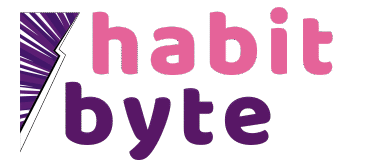Understanding Mindfulness Meditation: Global and Language-Specific Benefits
Mindfulness is more than a buzzword, it’s a trainable mental skill that helps you pay steady attention to what’s happening right now, without judgment. Why it matters: in a world of constant pings and pressures, mindfulness improves focus, softens stress reactivity, and supports sleep and mood. A lesser-known advantage is that the language you practice in (English, Hindi, or another) can shape how easily you apply mindfulness in daily life. This guide explains the core ideas, the science, and the practical, language-tuned methods, including mindfulness meditation benefits in Hindi, to help you start confidently.
1) What Mindfulness Is, and Why It Works
Mindfulness is the capacity to notice thoughts, sensations, and emotions as they arise and to choose your response rather than react on autopilot. Meditation is the training method: you gently rest attention on an anchor (often the breath), notice when the mind wanders, and return, again and again.
Think of it like strength training for attention. Each “notice and return” rep builds the muscle that keeps you steady under pressure. Over time, this steadiness spills into daily life: you pause before sending a snappy email, you settle your breath before a tough conversation, and you fall asleep more easily because you’re not fueling late-night rumination.
2) The Science-Backed Benefits You Can Expect
Decades of research, including randomized trials of Mindfulness-Based Stress Reduction (MBSR) and meta-analyses, find meaningful, reliable outcomes, often within 6–8 weeks of regular practice (about 10–20 minutes most days):
- Lower stress and anxiety: Mindfulness downshifts the nervous system and reduces rumination after triggers.
- Sharper attention and focus: Training attention improves concentration, task-switching, and working memory.
- Better emotional regulation: You recognize cues earlier and create a pause between feeling and action.
- Improved sleep quality: Breath and body-scan practices reduce pre-sleep worry and nighttime wakefulness.
- Pain coping: While pain intensity may not vanish, distress and reactivity often decrease, improving quality of life.
- Relationship gains: Less reactivity and more presence mean clearer listening and calmer communication.
Neuroimaging studies report training-related changes in regions linked to attention and emotion processing, visible footprints of practice. As researcher Jon Kabat-Zinn puts it, mindfulness helps you face life “as it is,” with more clarity and care.
3) Why Language Matters: Global Practice, Local Cues
Mindfulness is universal, but language shapes your inner experience. Bilingual research suggests the language you use can shift your self-talk, metaphors, and emotional tone. A cue like “let go” may feel abstract in English, while a Hindi cue, “ढीला छोड़ो” (dheela chhodo, release/relax), can feel more embodied for native speakers. When cues match your cultural language, resistance drops and the benefits stick more easily in everyday life.
Mindfulness Meditation Benefits in Hindi (व्यावहारिक लाभ):
- तनाव में कमी: धीमी, गहरी साँस लेते समय कहें, “शरीर को आराम; मन को विराम।” Breath pairs with a clear, soothing instruction.
- ध्यान और फोकस: मन भटके तो नोटिस करें, “विचार आया, जाने दो, वापस साँस पर।” “जाने दो” softens self-criticism.
- भावनात्मक संतुलन: तीव्र भावना पर कहें, “यह भावना स्थायी नहीं; मैं इसे महसूस कर सकता/सकती हूँ।” This builds tolerance and safety.
- नींद में सुधार: बॉडी-स्कैन: “पैर, ढीले; पिंडलियाँ, ढीली; जाँघें, ढीली…” Move upward slowly, part by part.
- दर्द प्रबंधन: “दर्द यहाँ है, पर मैं उससे बड़ा हूँ।” Reframes pain as part of experience, not the whole story.
Experiment: switch between English and Hindi cues. Notice which phrasing helps you relax, focus, or release tension faster.
4) A 5-Minute Practice You Can Use Anywhere
Try this brief protocol at your desk, in a parked car, or before a meeting. Keep it light and curious.
- Posture: Sit upright with relaxed shoulders, feet grounded, hands resting on thighs.
- Anchor: Rest attention on the breath at the nostrils or chest. Silently label “in… out.” Hindi option: “अंदर… बाहर।”
- Notice and name: When the mind wanders, label it gently, “thinking,” “planning,” or in Hindi, “सोच,” “योजना”, then return.
- Soften the body: On each exhale, release the jaw, shoulders, and belly. Cue: “ढीला छोड़ो।”
- Close with intention: Ask, “What matters for the next hour?” Hindi: “अगले एक घंटे में क्या महत्वपूर्ण है?”
Micro-dialogue: “Mind wandered to email. Noted. Back to breath.” Hindi: “ध्यान ईमेल पर चला गया। नोट किया। फिर साँस पर लौट आया/आई।” These tiny reps train nonjudgmental awareness and fast recovery.
5) Practical Takeaways to Build the Habit
Micro-habits for daily life
- Three-breath reset: Before opening a new tab or app, take three slow breaths. In Hindi: “तीन धीमी साँसें।”
- STOP method: Stop, Take a breath, Observe, Proceed. Hindi reminder: “रुकें, साँस, देखें, आगे बढ़ें।”
- Mindful transitions: At doorways, feel your feet for two seconds to reset between tasks.
- One mindful chore: Wash one dish with full attention, temperature, texture, scent, to practice staying present.
Measure what matters (without obsessing)
- Consistency: Track minutes per week (aim for 70–150).
- Stress reactivity: After triggers, rate how quickly you calm (1–10); look for trends over weeks.
- Sleep and mood: Note time-to-sleep, awakenings, and a quick
Bringing It All Together: Practice in Any Language, Anywhere
Mindfulness is universal, yet personal. Whether you meditate in English, Hindi, or your native language, what matters most is consistency and curiosity. Try a 5-minute daily session: sit comfortably, breathe naturally, and notice sensations, sounds, or thoughts, labeling them softly (“soch,” “breath,” “feeling”) before returning to the moment. Over time, this simple awareness builds calm focus, steadier emotions, and a kinder outlook toward yourself and others. Mindfulness isn’t about emptying the mind, it’s about coming home to it, wherever you are, in whatever language feels like home.
